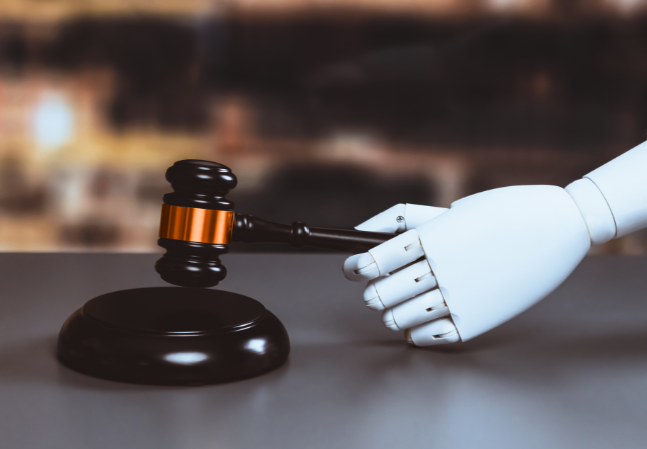Welcome! Save 30% on all CLE, CPE, and Professional Skills webinars, plus 15% off any annual pass with code HOLIDAY25
About the Course
Introduction
This CLE course will provide patent counsel with suggestions on claim and label language; to proactively coordinate patent, regulatory, and clinical personnel; and to maintain consistency between claims and likely or actual label language throughout patent prosecution and label negotiation with the FDA. We will also be looking closely at the "skinny" label case of GSK v. Teva.
Description
Direct infringement of a method patent occurs when a drug is provided to a patient such that it falls within the scope of a patented method. In the context of potential infringement by a generic drug maker before marketing the drug, how a drug will be used is typically determined by a review of the proposed labeling in the ANDA.
Under Hatch-Waxman, submitting an ANDA seeking approval for a generic drug in a use claimed in an Orange Book patent listing is infringement. Consequently, the ANDA-filing generic maker must file a Paragraph IV certification for the relevant listed patent attesting that the patent is either invalid or not infringed.
The Supreme Court ruled in Global-Tech Appl. Inc. v. SEB S.A., 563 U.S. 754 (2011) that induced infringement requires that the accused infringer knew of the patent and that the accused infringer intended its actions to cause direct infringement. In the pharma litigation context, knowledge of the patent is easily shown by the patents listed in the Orange Book and the generic manufacturer’s paragraph IV certification. Knowledge that the accused infringer intended its actions to cause direct infringement may be established by the instructions and information in a drug label.
Several other Federal Circuit cases address label language in an induced infringement analysis, including Sanofi v. Watson (Fed. Cir. 2017), Eli Lilly v. Teva Parenteral Medicines (Fed. Cir. 2017), and Vanda v. West-Ward Pharms (Fed. Cir. 2018), all of which will be discussed in detail for the guidance of pursuing induced infringement claims in Hatch-Waxman litigation.
Listen as our authoritative panel of patent counsel uses recent cases as a springboard to discuss strategy and tactics regarding claim language as well as label language. The panel will offer guidance on proactively coordinating patent, regulatory, and clinical personnel, maintaining consistency between the label and likely or actual claim language, and coordination throughout patent prosecution and label negotiation with the FDA. Further discussion will address litigation issues unique to Hatch-Waxman induced infringement.
Presented By

Dr. Feldstein, Ph.D., focuses on U.S. district court litigation, primarily concerning the enforcement of U.S. patent rights and trade secret issues, and post-grant trial proceedings at the USPTO, including inter partes review (IPR) and post grant review (PGR). He maintains an active patent prosecution practice, preparing and prosecuting U.S. patent applications on behalf of domestic and foreign clients. Dr. Feldstein also provides opinions and strategic guidance to clients on infringement, validity, enforceability, and clearance matters. His practice encompasses a range of technologies, including pharmaceuticals, biochemistry, polymers, small molecule chemistry, optics, and medical and analytic devices.

Mr. Hasford has experience in all areas of intellectual property law. His practice focuses on complex patent litigation at the trial and appellate levels on behalf of pioneer pharmaceutical companies. He has particular experience with cases arising from Abbreviated New Drug Applications (ANDAs) under the Hatch-Waxman Act. Justin also has litigated antitrust cases and business method patent cases. He counsels clients on issues of infringement, validity, enforceability, unfair competition, licensing, due diligence, and IP portfolio management. He has extensive experience advising clients regarding the interplay between patent and regulatory laws, including Orange Book listing of patents for drugs approved by the FDA.

Mr. Irving has 47 years of experience in the field of IP law. His practice includes due diligence, patent prosecution, reissue and reexamination, patent interferences, and counseling, including prelitigation, Orange Book listings of patents covering FDA-approved drugs, and infringement and validity analysis in the chemical fields, as well as litigation. He has served as lead counsel in many patent interferences.

Ms. O’Brien has more than 20 years of experience representing domestic and foreign clients of all sizes in patent procurement, litigation, and client counseling, with a particular emphasis on chemical, biochemical, and pharmaceutical technologies. Exemplary areas of her technical expertise include polymer chemistry; ceramics; glass; food chemistry; cosmetics; paper products; adhesives; and pharmaceutical products, including new chemical entities and formulations and novel solid forms, including polymorphs, cocrystals, and amorphous forms of compounds.
-
This 90-minute webinar is eligible in most states for 1.5 CLE credits.
-
Live Online
On Demand
Date + Time
- event
Thursday, December 14, 2023
- schedule
1:00 p.m. ET./10:00 a.m. PT
- Traditional infringement analysis focus is on claim language, but inducement to infringe analysis in the Hatch-Waxman context additionally focuses on the label language
- Recent court treatment
- Strategies and tactics
- Maintain the coordination referenced above throughout the U.S. patent prosecution and label negotiation with FDA
- Maintain consistency between claims and likely or actual label language
- Coordinate patent, regulatory, and clinical personnel early
The panel will review these and other notable questions:
- What are the lessons from recent decisions?
- What are the best approaches to maintain consistency between claims and likely or actual label language?
- What are the steps to maintain the coordination of patent, regulatory, and clinical personnel throughout the patent prosecution and label negotiation with the FDA?
Unlimited access to premium CLE courses:
- Annual access
- Available live and on-demand
- Best for attorneys and legal professionals
Unlimited access to premium CPE courses.:
- Annual access
- Available live and on-demand
- Best for CPAs and tax professionals
Unlimited access to premium CLE, CPE, Professional Skills and Practice-Ready courses.:
- Annual access
- Available live and on-demand
- Best for legal, accounting, and tax professionals
Unlimited access to Professional Skills and Practice-Ready courses:
- Annual access
- Available on-demand
- Best for new attorneys
Related Courses

Patent Validity and Entresto: Lessons From the Ongoing Dispute
Tuesday, January 13, 2026
1:00 p.m. ET./10:00 a.m. PT

Evaluating and Acquiring Patent Portfolios: Key Considerations
Thursday, February 19, 2026
1:00 p.m. ET./10:00 a.m. PT

Evaluating and Acquiring Patent Portfolios: Key Considerations
Available On-Demand

Invalidity Opinions in Patent Litigation: Shielding Against Liability
Available On-Demand



